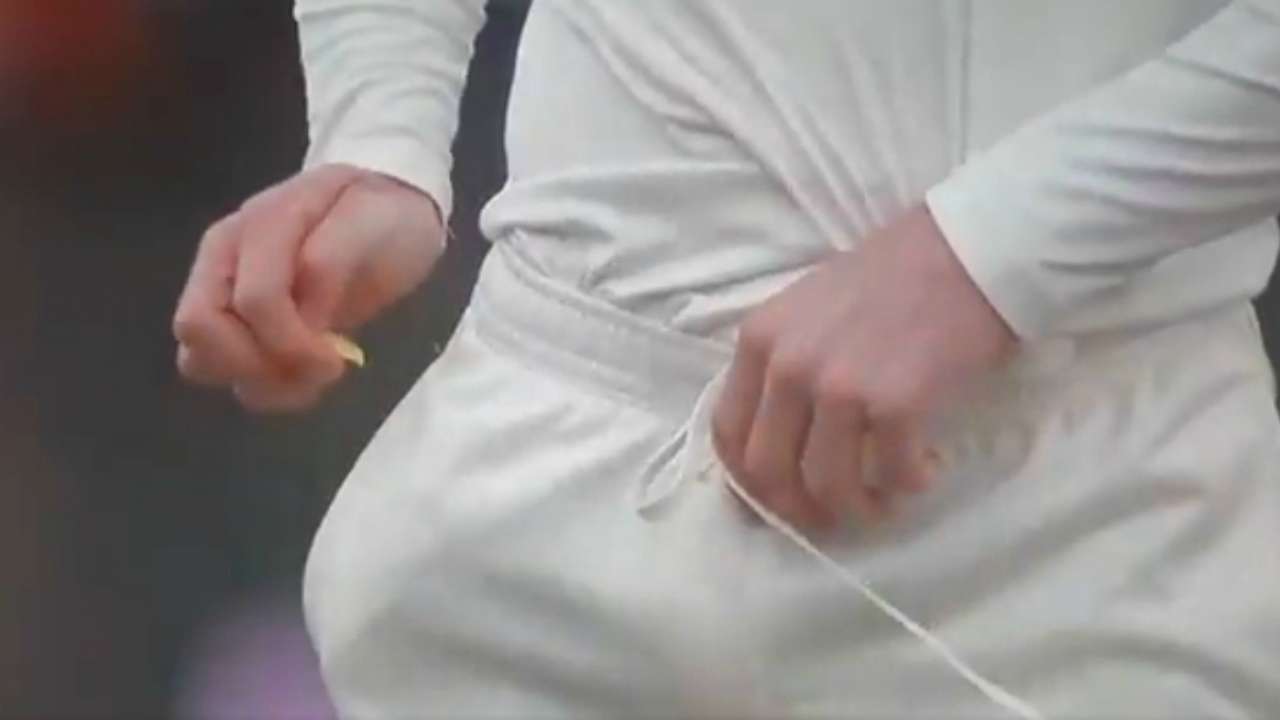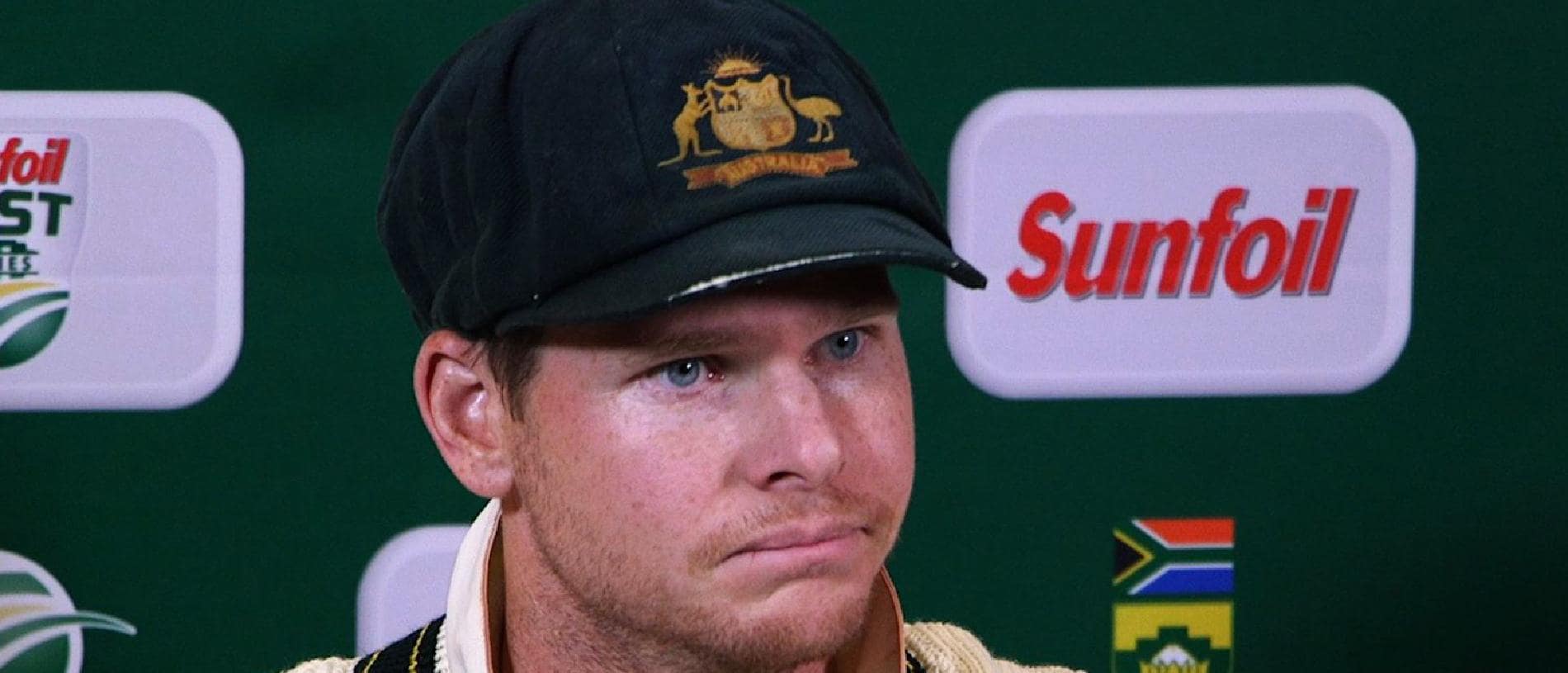Ball-tampering is one of cricket’s great taboos, up there with throwing and match-fixing. Any doubt one might have had about this would have been resolved by the extraordinary fall-out from the Cameron Bancroft incident on the third afternoon of the third Test between South Africa and Australia at Newlands.
The incident itself was bizarre enough, with the hapless Bancroft making a pitiful exhibition of himself before the world’s cameras. And it was followed by what must surely rank as one of the game’s most remarkable press conferences.
Once Australia’s captain Steve Smith had decided to face the media he had little choice but to admit that he and his team were bang to rights. But there was something unappealingly mealy-mouthed about his statement. For a start, the unfortunate “Bangers” was hung out to dry, opening proceedings with a description – not entirely accurate, as it transpired – of what happened on the field. Then Smith took over. While on the face of it seeming prepared to take responsibility for what had happened, as captain, he seemed more than happy to share the blame with the “leadership group”, whatever that is (“I won’t name any names”, although it turned out to be a soubriquet for vice-captain David Warner and himself) and his least experienced player, Bancroft. Some have suggested that Bancroft was on a frolic of his own, perhaps with Warner but unauthorised by Smith; others have assumed that the “bowling group” must have had at least some idea of what was going on.

“Obviously It didn’t work” Smith said. “The umpires didn’t see it change the way the ball was behaving or the way it looked or anything like that….. Poor choice.” It is not entirely clear what the poor choice was? The method of ball-tampering chosen was poor because it didn’t work? Or because it was so ham-fistedly executed that the perpetrator was caught?
Smith did say that it – whatever “it” is – would never happen again on his watch but he seemed blissfully unaware – or perhaps this was just bravado – that his watch must surely have run its course. Within hours he had lost the captaincy of the Rajastan Royals – no inclination there to be linked with a newly toxic brand – and within days he and Warner had been banned by Cricket Australia for twelve months, and Bancroft for nine.
It is no accident that the Australians’ discomfiture has been greeted with universal glee – or shame – throughout the cricketing world. The side moulded by Smith and his insufferable henchman, Warner, has become an extraordinarily unattractive one. Only a day before the ball-tampering incident Australian coach Darren Lehmann made a formal protest about the Newlands crowd verbally abusing the visiting players and, in particular, their partners. This does sound bad; in fact the whole series appears to have been conducted in a miserably foul-mouthed and mutually disrespectful atmosphere – but for an Australian to complain about the attitude of the home crowd?! Nasser Hussain was one of a number of commentators to express incredulity. Relentless boorishness is bad enough but when wheedling hypocrisy is added to the mix it really is too much.
Hussain reminded us that Lehmann had encouraged Australian crowds to sledge England’s fast bowler Stuart Broad “until he cries”. What had Broad’s offence been? Oh yes, he had not “walked” after being given not out by the umpire, albeit erroneously, after edging a ball to the keeper. (Australia had run out of reviews; England won. Get over it.)
Did Broad cheat? What would Thomas Hughes, the author of Tom Brown’s Schooldays think? Surely the cardinal principal of cricket is respect for the umpire’s decision. More to the point, no Australian batsman, except very rare and special people, like Brian Booth and Adam Gilchrist, has ever walked.
Did Smith cheat? Well obviously, yes. The relevant provision in the Laws is Law 41.3 (“Unfair Play: The Match Ball – Changing Its Condition”). It is an offense for a player to take any action which changes the condition of the ball. A fielder is allowed to polish the ball on his/her clothes” provided no artificial substance is used”. Bancroft had brought some sort of sticky tape on to the field and was planning to pick up “granules” from the pitch, presumably to create a sandpaper effect. (It is now clear that it was, in fact, sandpaper. As the offending object ended up being thrust down Bancroft’s jockstrap even the most zealous investigator might have had qualms about examining it too closely.)
Even Smith admitted that what happened wasn’t within the spirit of the game. It is the premeditated nature of the action which has excited most attention. The thought that a leadership group could actually have met to discuss such a thing seemed shocking in various ways, as much for its crass stupidity as anything; the fact that it may have been just Warner and Bancroft makes it scarcely less so. The penalties handed out to the three men, much heavier than for any previous example of ball-tampering, are a reflection of this aspect of the matter, and also of the universal opprobrium felt in Australia for the disgraced players.
Inevitably, questions are being asked about the recent past, despite the absence of any actual evidence. In the Ashes, Australia’s fast bowlers generated far more swing than the hugely talented James Anderson. Images have emerged of the ever eager-to-please Bancroft – cricket’s Labrador puppy – pouring sugar into his trouser pocket during a break in the Sydney Test.
Amid all the brouhaha the South Africans have kept quite quiet. Of course, they have form in this area. The last captain to be disciplined for ball-tampering was theirs, Faf du Plessis. Du Plessis was caught on camera during the second Test between Australia and South Africa at Hobart in 2017-17 applying saliva to the ball while sucking a sweet. Far from confessing, like Smith, du Plessis challenged his conviction, unsuccessfully. David Richardson, the ICC chief executive admitted that this aspect of the law was difficult to police but asserted that there was no room for doubt in du Plessis’ case.
The fact is that bowlers – and fielders – have probably been trying to change the condition of the ball since the game was invented. But everything changed with the development of reverse swing. This phenomenon, where the old ball can be made to swing ( a freshly lacquered new ball will usually swing naturally) requires one side of the ball, viewed with a perpendicular seam, to be smooth and shiny while the other is rougher. So a lot of ball management is required.
The first masters of reverse swing were Pakistan, initially Sarfraz Nawaz and Imran Khan, and then Wasim Akram and Waqar Younis. All of them were marvellous bowlers, but there were constant mutate rings, especially during two tours of England in 1992 and 1996, of the dark arts of ball management. Martin Crowe, of New Zealand, scored a hundred against Pakistan at Lahore in 1990-91. At one point he picked the ball up and was shocked to see how mauled one side of it. In the next game, Chris Pringles took six wickets for New Zealand, using a bottle top to work on the ball.
Gradually, everybody worked out how to do reverse. When Simon Jones was swinging it round corners in 2005 nobody talked about unfair play; it was all supreme natural ability. But, of course, there was a good deal of ball management involved. Marcus Trescothick, England’s ball manager in chief, was always sucking a mint. (Presumably England have a team dentist among the cast of thousands backroom staff.) How, precisely, does that differ from the du Plessis situation? Michael Vaughan has struggled to explain.
Back in 1994 England captain Mike Atherton had his “dirt in the pocket” crisis in the Lord’s Test against South Africa. He told match referee Peter Burge that he was using the dust to keep his sweaty hands dry whereas in fact he was using it to maintain – as opposed to change – the condition of the ball. Burge later said that if he had known the facts he would probably have suspended Atherton.
Bowlers, inevitably, tend to have a more liberal attitude to ball-tampering. Imran, who admitted to using a bottle top on a ball in a county match while playing for Sussex, felt that bowlers ought to be able to do pretty well whatever they wanted with the ball. Derek Pringles, the former England all-rounder, writing in the 2017 Wisden, called for Law 41 to be relaxed.
But there is an undeniably moral, ethical element to ball tampering. This emerges most clearly when there is a feeling that a particular charge is unjustified. There are two outstanding examples of this.
The first was the Oval Test of 2006, forfeited by Pakistan, despite appearing to be in a winning position. On the fourth afternoon, during England’s second innings, fourth umpire Trevor Jesty suddenly appeared with a box of balls. A replacement ball was chosen, not by the umpires but by the batsmen, a sure sign that something was up. The senior umpire, Darrell Hair, then signalled a five-run penalty be awarded to England, the punishment laid down in Law 41 for ball-tampering.
Unlike the cases in Newlands, Hobart and Lord’s there were no indications of foul play on television. The umpires were reacting just to the condition of the ball. Play continued to tea, but after tea Inzamam-ul-Haq refused to lead his team out and the match was forfeited. The row rumbled on for weeks. Hair and his colleague Billy Doctrove had acted in an extraordinarily high -handed way. No attempt was made to have a quiet word with Inzamam, for instance.
The other case occurred during India’s tour of South Africa in 2001. On the final morning of the second Test at Port Elizabeth it was announced that the match referee Mike Denness had imposed penalties on six Indian players for various breaches of the code of Conduct. One of those players was Sachi Tendulkar, whose offence was “interference with the match ball, thus changing its condition”. That seemed a bit vague. Spit it out Mike! It’s ball tampering; Sachin’s a cheat!
Denness clarified the position by stating that what Tendulkar had done was to remove mud from the ball without the supervision of the umpires, undoubtedly a breach of the Code. But the clarification had come too late. Riots had broken out all over India. Big cheese Jagmohan Dalmiya flew to South Africa to manage the crisis. India refused to play the third Test if Denness remained in charge. The game, easily won by South Africa, was an “unofficial Test”.
So these things can have major consequences. Smith is just discovering that. There is almost an element of the Greek tragedy about it. A sublimely gifted batsman, with the cricket world at his feet, but a little naive and impressionable perhaps. For whatever reason, and under whatever pressure, he makes a catastrophically bad decision and, suddenly, because of those few moments, it’s all over.
Bill Ricquier




